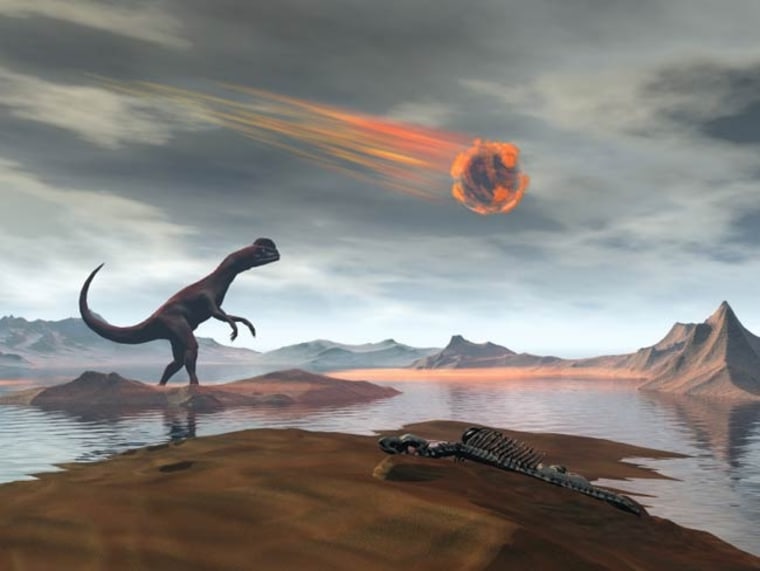Scientists have debated for two decades whether a giant space rock wiped out the dinosaurs or if some other catastrophe did the deed.
Now, a blue-ribbon panel of scientists has banded together to support the link that ties the Chicxulub asteroid impact crater in Mexico's Yucatán Peninsula to the mass extinction of dinosaurs and the majority of life on our planet 65 million years ago.
"It is an international consensus. They are saying that there's a rock solid link between the Chicxulub impact event and the K-T boundary mass extinction," said David Kring, a senior staff scientist and geologist at the Lunar and Planetary Institute in Houston.
The K-T boundary refers to a layer of iridium-rich clay that marks the end of the Cretaceous period 65 million years ago. Iridium is a chemical element commonly found in asteroids and comets, and the K-T boundary has been held up as the tail-ending tale of an asteroid impact that snuffed out the dinosaurs.
Nearly 20 years ago, it was Kring who announced the discovery of shocked quartz and other evidence of a huge, out-of-the-sky wallop — evidence that was extracted from a mile-deep (1.6-kilometer-deep) drill hole into a buried crater on the Yucatán Peninsula of Mexico.
Kring and his team named the crater Chicxulub for a Mayan village above the center of the crater. That Mayan word means "tail of the devil," which Kring thought was an ideal name for a dinosaur-killing asteroid impact.
"Nineteen years ago I thought the case was pretty solid," Kring said. "The international community has been poking at this for nearly two decades," he told Space.com during the 41st Lunar and Planetary Science Conference, being held here this week.
The announcement was made by Kring and co-authors William Boynton and Alan Hildebrand in Texas at the LPSC in 1991.
Now, fast forward to this week.
A team of more than three dozen scientists from around the world reported on their consensus in Friday's issue of the journal Science.
The paper's lead author, Peter Schulte of the University of Erlangen in Germany, declared in a press statement that the question was settled: "Combining all available data from different science disciplines led us to conclude that a large asteroid impact 65 million years ago in modern day Mexico was the major cause of the mass extinctions."
Kring said that with any extraordinary discovery there is a natural interest in confirming it. That's the scientific method.
"You need to have a testable hypothesis and you need to confirm it with multiple lines of evidence," Kring added. "What's important is for the international community to have that opportunity to review the data and make up their own minds."
Tenets of geology
"We saw the very same thing with the concept of plate tectonics — which we all now accept," Kring said. "But the concept of an impact mass extinction hypothesis is as revolutionary ... and there are going to be people who just are not going to accept it."
Over the years, some researchers have suggested that the Chicxulub impact occurred too early to account for the extinction of the dinosaurs. Others have proposed that a different cosmic impact or volcanic eruptions might have played a role in the catastrophe.
Kring noted that there are specialists in the historical importance of scientific ideas who have compared and contrasted the impact mass extinction hypothesis and its effect on the tenets of geological sciences.
"They have concluded that it is actually, fundamentally, a larger shift, a bigger change, than the theory of plate tectonics," Kring said.
So it's not surprising that there will be those in the unconvinced camp, Kring said. Nevertheless, he said there is a huge consensus represented by the paper in Science.
